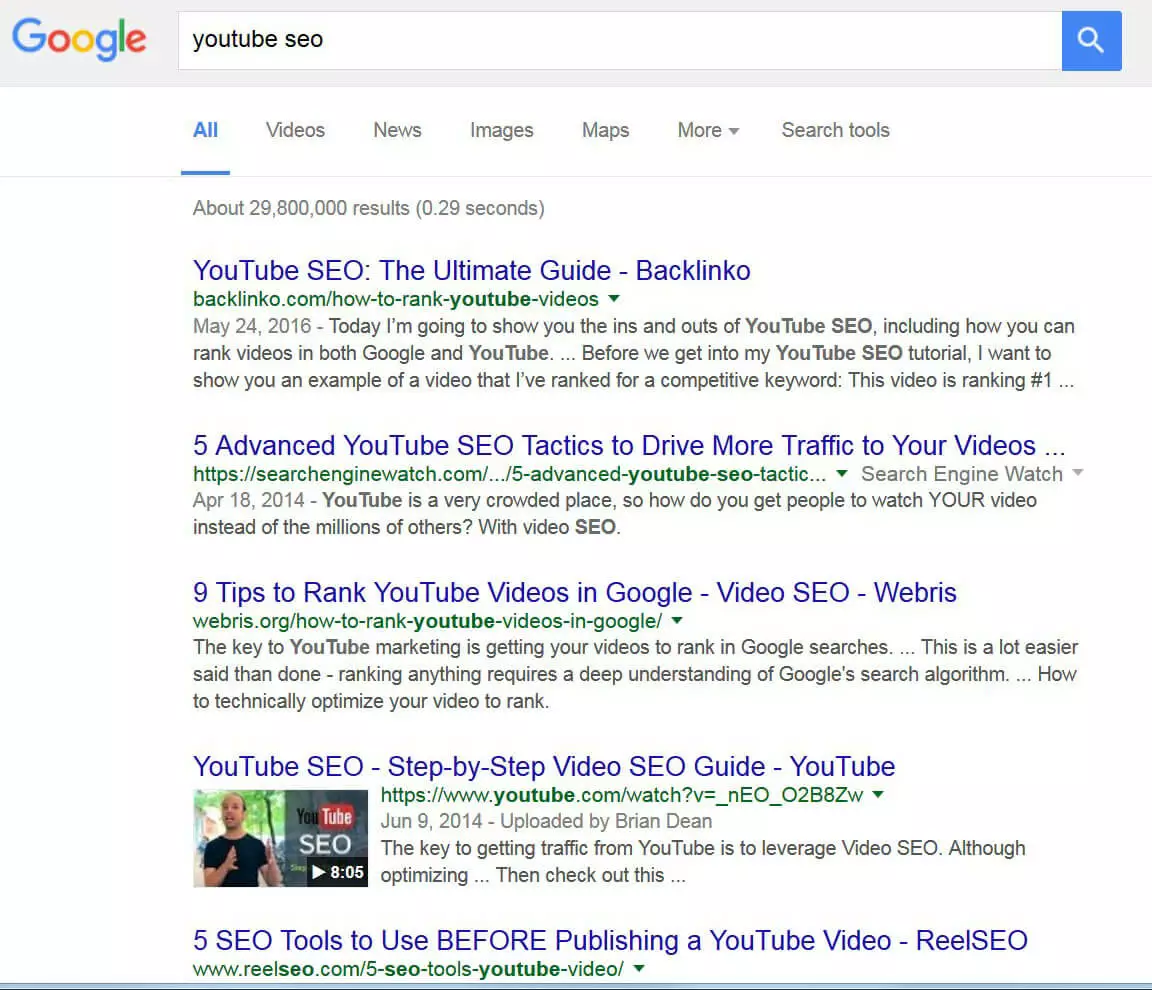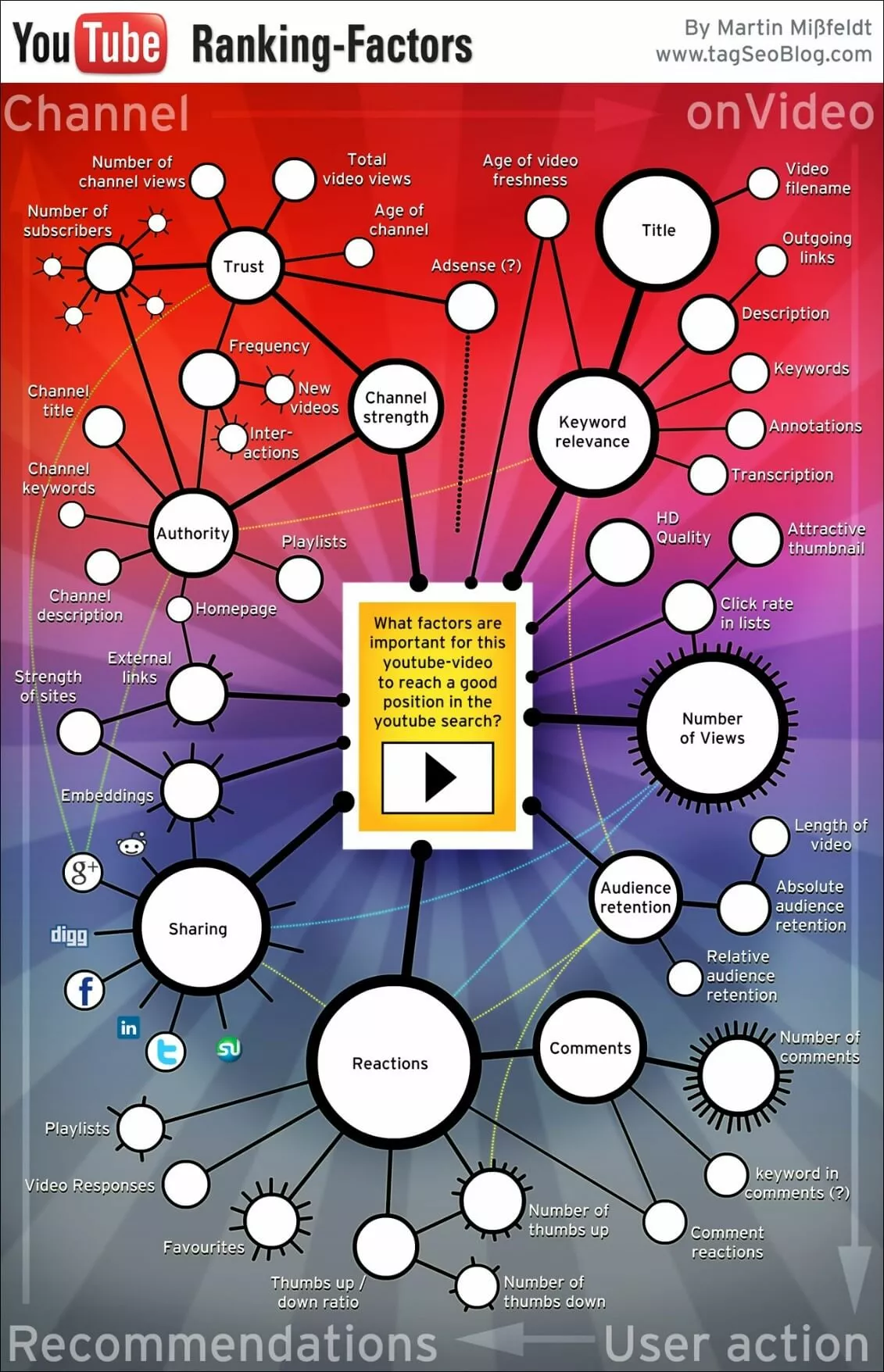YouTube SEO: ranking factors and optimization tips
To succeed as a company on social media, you have to stand out from the masses – be it on YouTube, Twitter, or Facebook. Videos play an increasingly important role in strengthening a company’s online presence. They already account for a large portion of global internet traffic and communication on these platforms. This presents a tough problem for entrepreneurs: new content has to compete in a densely saturated video market. This means that it’s not just the topic and quality of your videos that will help set you apart from the competition: you’ll need fine-tuned marketing skills, too.
When it comes to other platforms, good networking is the best way to make sure your clips reach their audience. But there’s an extra tool available to help you succeed on YouTube: SEO. It may be best known as a video portal, but YouTube can justifiably be referred to as the second largest search engine – processing more than 3 billion searches a month. There are numerous tricks to help you improve your YouTube ranking and make sure that more users notice your videos. And because this video service is owned by Google, it’s also closely connected to the leading search engine, so success on YouTube can also lead to high ranking on Google’s search engine results pages (SERPs).
How to improve your YouTube ranking
Just because you can improve your YouTube ranking with SEO measures, this doesn’t mean that content should play a lesser role. You should view YouTube SEO as a helpful addition, enabling you to improve the reach of your clips and gain an advantage over your competitors. Although a video without good marketing may have trouble gaining views, video SEO is no guarantee of success – the content must do the talking.
So your first step should be to create interesting and unique videos that entertain, educate, or help viewers to solve problems. Review your content’s performance regularly, taking note of which videos are most popular with users and reacting accordingly. The different ranking factors and optimization tricks that we’ll introduce in this article can only be fully effective if you meet these basic requirements first.
On page video SEO: keywords, metadata and more
As we’ve already discussed, YouTube is also a search engine. So choosing the right keywords for your clips is just as important as it is for a website’s SEO efforts. For this reason, you should carry out diligent research and make use of tools like the Google Keyword Planner. An added source of inspiration for long-tail keywords is the autocomplete function of the YouTube search bar, which is comparable to Google Suggest. Relevant keywords are crucial in the following four areas:
- Title: the title is the most important element of video optimization for SEO. You’ll need to find a title that contains the most important keyword yet still remains appealing to the viewer.
- Description: the video description is also an important ranking factor. Take the time to construct a meaningful and informative text that lets users and YouTube know exactly what your video is all about. You should aim to use multiple keywords here and include external links to your website or social media accounts. Keep in mind that the first 100-150 characters are the most important, since they appear in the YouTube preview and are displayed as snippets on Google, Twitter, and Facebook.
- Tags: tags are search terms that help YouTube users find your video, so your researched keywords should all be included as tags. But be aware that tags aren’t nearly as influential as they were when the video platform began.
- File name: though it isn’t usually seen as a major ranking factor, it’s recommended to add keywords into the name of your video file.
Further on page factors that influence YouTube ranking include the transcript file, which is a simplified method for creating subtitles and captions, the video quality (SD or HD), and the age of the video. Another important factor is annotations, in the form of pop-ups, text overlays, or speech bubbles, all of which give your video an interactive feel. And last but not least, the thumbnail (the preview image of your video) must be taken into account. Thumbnails and titles are the most important criteria for a good click rate, or in other words high viewing figures. So it’s important to carefully select the right thumbnail, instead of just using the first available snapshot.
Channel optimization
The strength of your YouTube channel is just as decisive for ranking as on page video SEO. Through a well-structured channel that presents your clips in playlists with proper text descriptions, you can show both YouTube and potential viewers what to expect from your videos. By displaying figures such as the number of video views, the number of subscribers, and the age of your channel on your channel homepage, you can begin to build a reputation as an expert in your field.
A well-maintained YouTube channel is a valuable tool that should be used whenever you add content to the video platform. Channels influence your ranking positively, provided you regularly upload new videos that contain useful annotations and fit well into your overall concept.
Off page video SEO: crosslinking content
Since YouTube video content is made for sharing across the web, YouTube SEO is also possible in more traditional, off page measures. Try to generate external links that lead to your channel or to particular videos, or embed your clips into external sites. The more influential the websites that link or embed your content are, the more positive the effect will be on your YouTube ranking.
Alongside traditional link building, circulating content on social networks is another important task in YouTube SEO. By publicizing your YouTube clips on social media channels like Twitter, Facebook, or Pinterest, you can gain new viewers from other platforms and increase your ranking through content sharing.
User signals and their optimization
User signals are the only sources of information about the quality of video content on YouTube. The video platform evaluates the number of views and the reactions of viewers, comparing these factors with similar videos that have been uploaded. So it’s very beneficial for your YouTube ranking if users view your videos often and for as long a duration as possible. If you have low views and a high bounce rate, this will impact very negatively - just like it would with a website.
The following are some other examples of user signal factors that impact your YouTube ranking:
- Number of comments
- Use of keywords in comments
- Responses to comments
- Number of positive responses (‘thumbs up’, ‘likes’)
- Relationship between positive responses and negative responses (‘thumbs down’, ‘dislikes’)
- Number of video responses
- Number of users who have added clips to a playlist
The best way to influence user reactions is to take an active part in user discussions on your videos: respond to constructive criticism and positive feedback to connect to users and build open discussions with them.
If you can master the various disciplines of YouTube SEO optimization, you’ll be certain to reach a good ranking position on the SERPs of the video platform.



